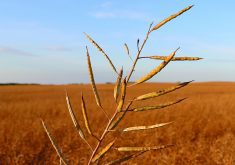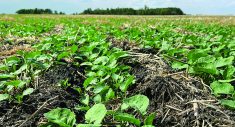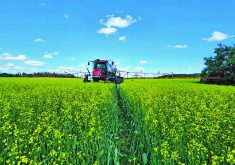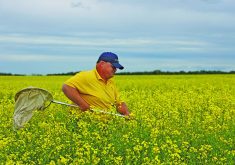The main concern going into the 2023 canola growing season was extremely low soil moisture levels. Dry conditions during the 2022 growing season depleted soil moisture reserves across most of Western Canada. The moisture deficits were most acute in Saskatchewan and Alberta, which were rated as very dry and contained nearly zero moisture below six centimetres.
Winter precipitation was below normal across most of the prairie region with only small areas of southern Alberta and western Saskatchewan reporting above normal snowfall.
Other stories in the 2023 Canola Yearbook:
- Decent yields in dry times
- Canola views – photo essay
- Spraying in dry times can be tricky
- Flying the fields
- Hormone imbalance suspected for malformed racemes
- Incorporating resistant traits weighs on yields
- Production briefs
- Pest roundup: Canola pests kept in check by dry conditions
- Disease roundup: Verticillium has breakout year
- Canola news briefs
- Canola growers scramble to address federal policy issues
- What happens when the big crop comes?
- Bids tumble but canola demand is firm
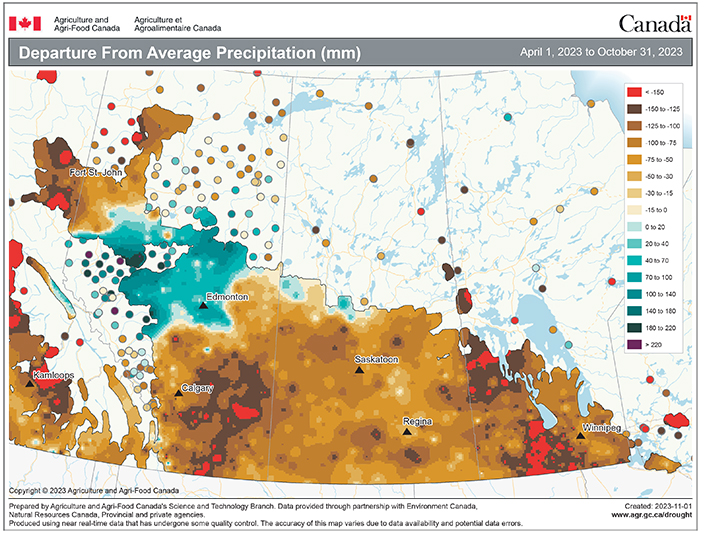
The driest conditions during the 2022-23 winter were in the eastern Prairies, which reported snowfall deficits of more than 45 millimetres of water-equivalent moisture. The positive news is that these areas had slightly better subsoil moisture conditions and were rated as dry to wet, thanks to late season rains in the fall of 2022.
The spring got off to a slow start as winter lingered well into April across the Prairies. Monthly average temperature ranged from 2 C to 4 C degrees below normal in the eastern Prairies, to close to normal in the Peace River region of Alberta. An abrupt change from winter to spring occurred in the last week of April as above-normal temperatures spurred rapid seeding progress of all crops. These warm temperatures were welcome but a lack of rain during May caused delays in canola emergence in the western areas of the Prairies. Northern growing areas of Alberta and northern Saskatchewan received some beneficial showers that aided in canola establishment during May.
The hot weather in May continued through June with temperatures 0 C to 2 C above normal in the western growing areas and 4 C to 6 C above normal in the eastern growing regions. Precipitation continued to improve moisture in northern Alberta and northwestern Saskatchewan, which helped maintain production potential in these areas. Stress to the canola crop continued in most of the southern and central growing regions of the Prairies as drought set into the region. Heat in the first half of July caused significant crop losses in the driest areas of the southern and central Prairies. Cooler conditions in the second half of July helped canola in the northern growing regions recover and extend the critical blooming period. This was beneficial for the yield prospects.
August weather continued to be mostly warm in the west, while eastern areas of the Prairies remained cooler than normal. The heat stressed crops and caused canola to rapidly mature in the southern and central growing regions. August was wetter than June or July, with the heaviest precipitation falling in the northern growing regions. These rains were critical in boosting the available moisture for the later planted canola fields.
Canola harvest began early in the dry regions of the southern Alberta and southwestern Saskatchewan with most farmers starting in early August. Northern growing areas of the Prairies began harvest the third week of August, which is still ahead of normal. Canola harvest progressed rapidly in the southern and central Prairies, while northern region progressed at a slower pace. The canola harvest was mostly wrapped up by the first week of October across the Prairies.
Canola crop production is expected by Statistics Canada to drop by 1.33 million tonnes to 17.37 million tonnes this year. Canola yields in Canada are forecast by Statistics Canada to be 0.214 tonnes per hectare less than last year at 2.139 tonnes per hectare. The moisture deficit for the growing season from June through August was generally between 25 mm and 100 mm, which reduced yields in all crops. The yield and production estimates were released in the middle of September and are expected to increase when the final estimates are released in December.
Canola quality
Canadian harvest quality of the canola crop is published by the Canadian Grain Commission. The data below is for the 2023 harvest as of Nov. 15. The data for No. 1 Canada canola this year in Western Canada indicates that overall vegetable oil content increased by 1.5 percent this year to 43.6 percent. Canola meal protein content was lower by 0.7 percent than last year at 21.7 percent. The meal protein content is similar to the five-year average.
Alberta
The growing season (May through September) in Alberta was hotter and drier than normal, which had a very modest impact on canola yields. Statistics Canada projects the yields in Alberta were down by only 0.017 tonnes per hectare to 2.117 tonnes per hectare.
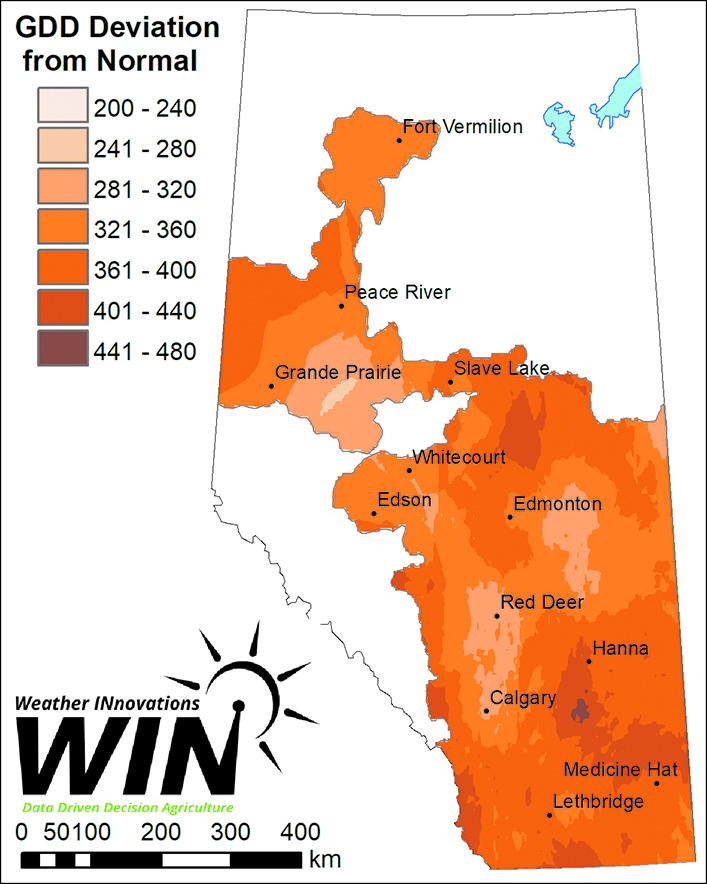
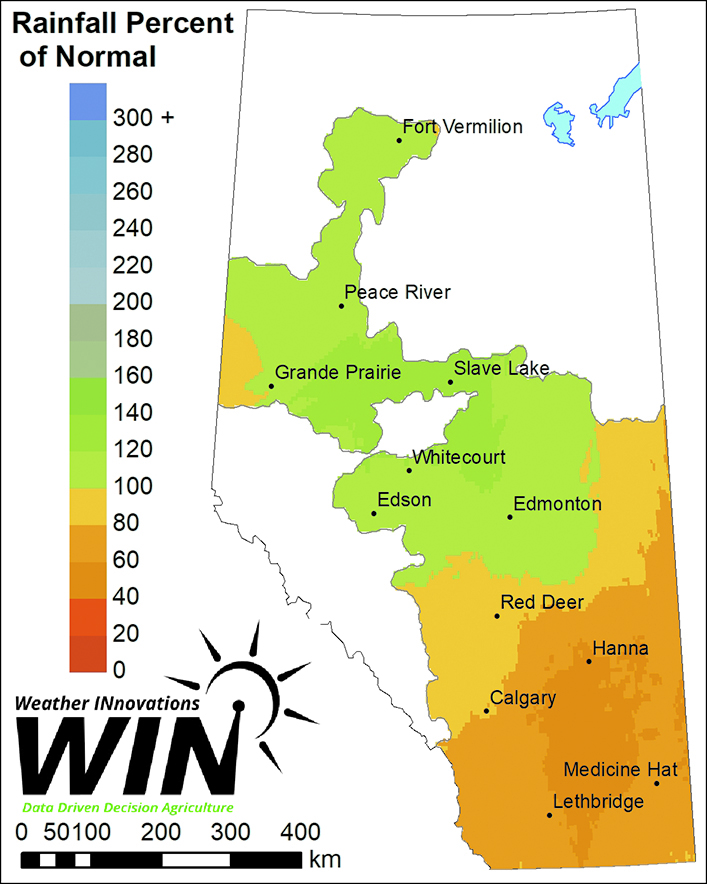
The growing degree day totals for the season ranged from 400 to 440 GDDs above normal in southern Alberta. Central and northern Alberta received 240 to 360 GDDs above normal. These central and northern areas contain much of the canola crop.
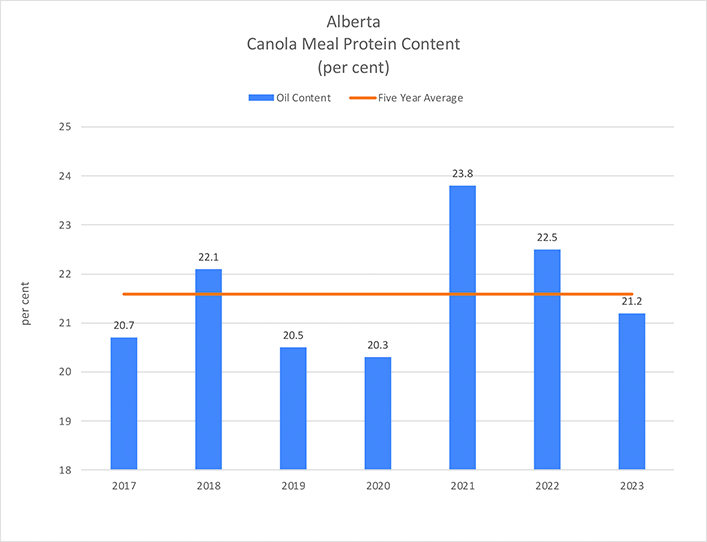
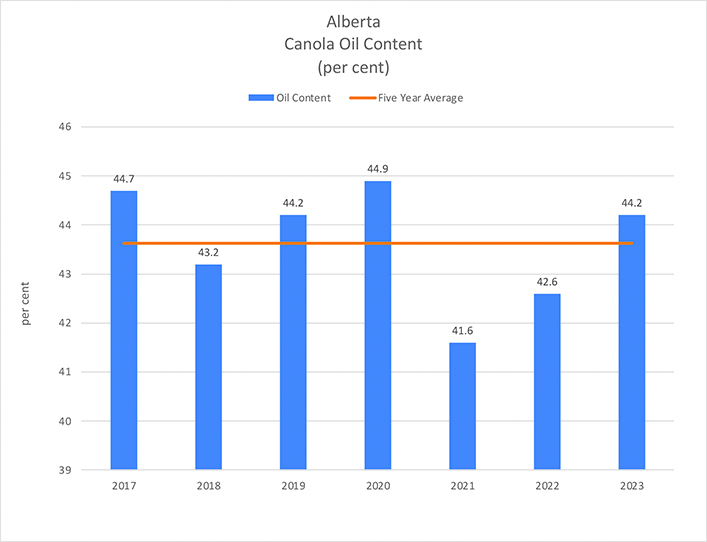
These northern growing areas received considerably more precipitation than the southern regions of Alberta. Southern Alberta received less than 60 percent of normal precipitation, while northern regions received 100 to 140 percent of normal. The weather affected the quality of the canola crop in Alberta. Protein content in Alberta dropped below the five-year average to 21.2 percent. Oil content increased by 1.6 percent from last year to 44.2 percent. The above normal precipitation and milder temperatures contributed to the drop in protein and increased in oil content this year.
Saskatchewan
Saskatchewan is the largest canola-producing province and experienced varying degrees of stress to the 2023 crop. The warmest conditions were reported in the western areas of the province, which accumulated 360 to 440 GDDs above normal. Eastern regions were significantly cooler, with deviations mostly 200 to 320 GDDs above normal.
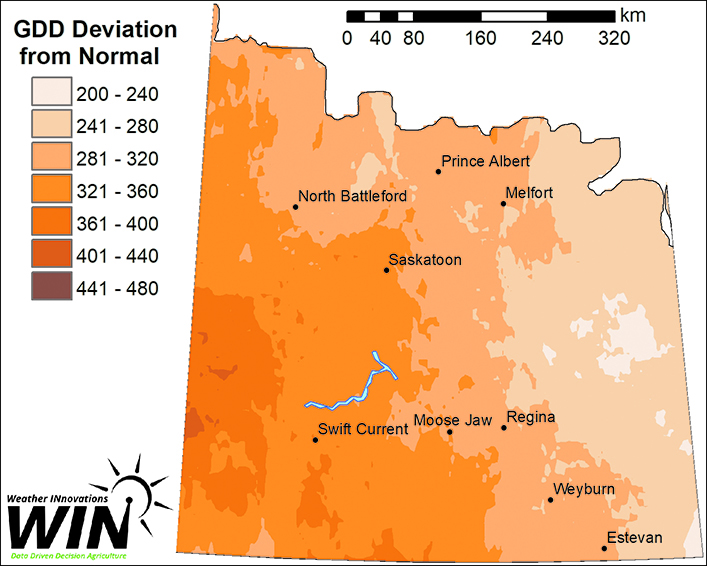
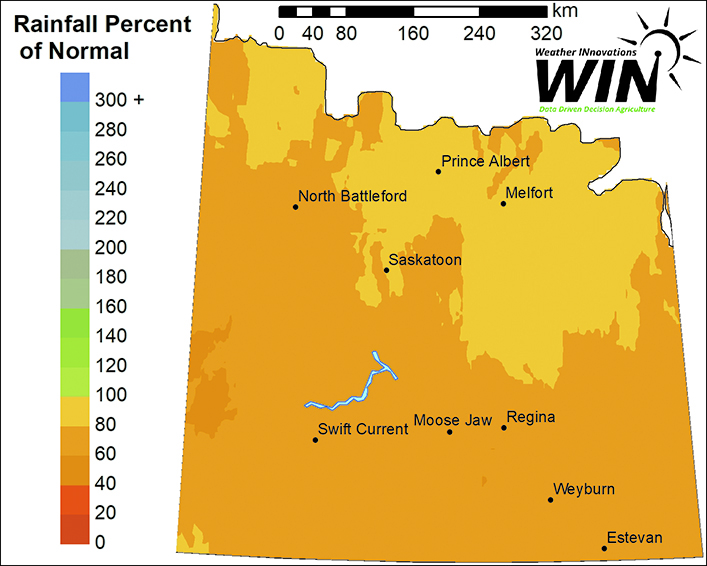
The oil content of the 2023 Saskatchewan harvest increased by 1.1 percent to 43.2 percent this year but remains below the five-year average of 43.2 percent. Meal protein content dropped by only 0.4 percent to 22 percent.
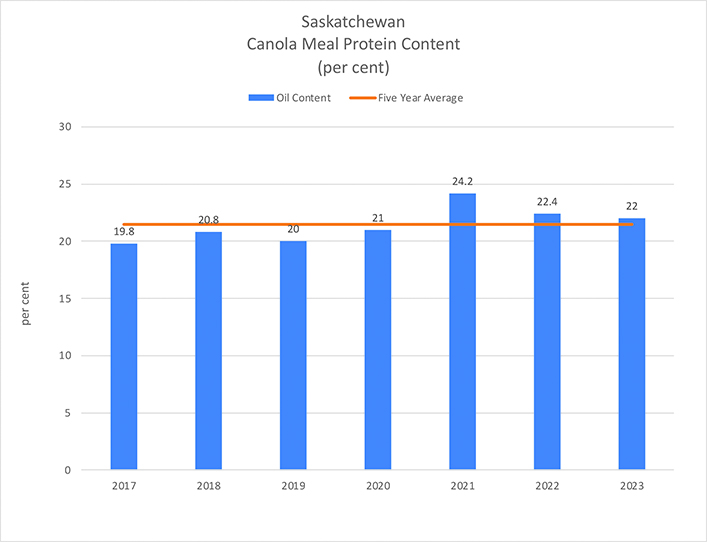
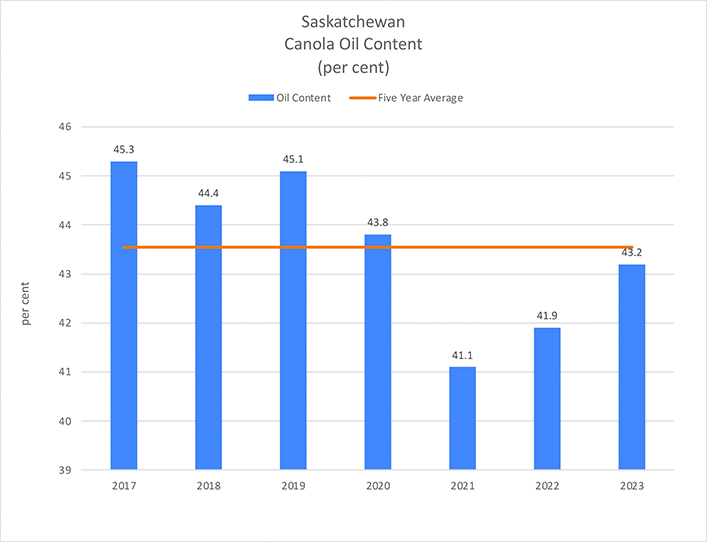
The drier conditions this year have contributed to the higher than average protein content which is 21.5 percent. Saskatchewan protein levels are typically lower than Alberta’s, but not this year, likely because the more stressful conditions were experienced in Saskatchewan’s main growing areas.
Manitoba
Manitoba was also drier and warmer than normal during this past growing season. Rainfall ranged from 40 to 80 percent of normal. Eastern areas of the province were warmest, with deviations ranging from 280 to 400 GDDs. The western areas of the province were mostly 200 to 280 GDDs.
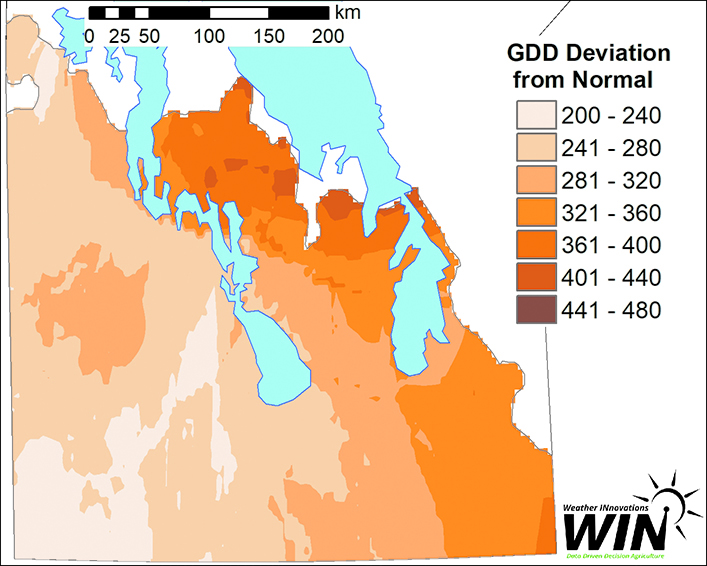
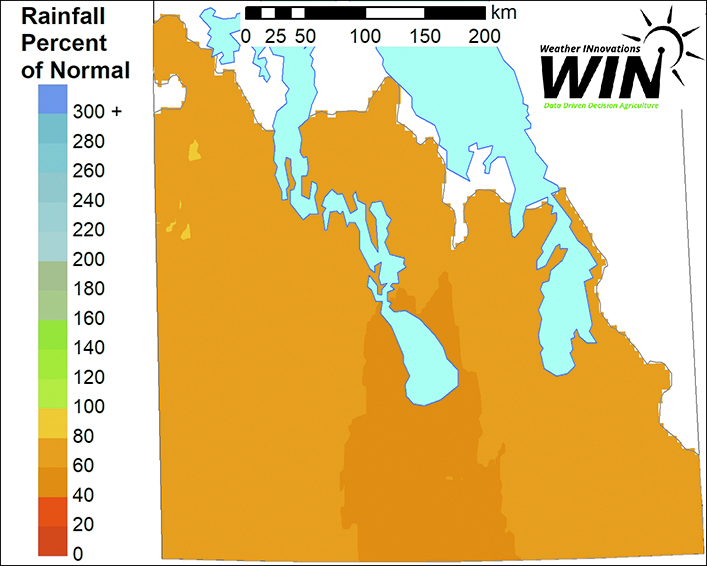
The oil content in Manitoba’s canola crop was higher by 1.1 percent from last year to 43.1 percent.
Soybean meal protein content was down by 0.1 percent to 21.7 percent. The changes to the canola oil and meal protein content in Manitoba were the smallest of the three provinces.
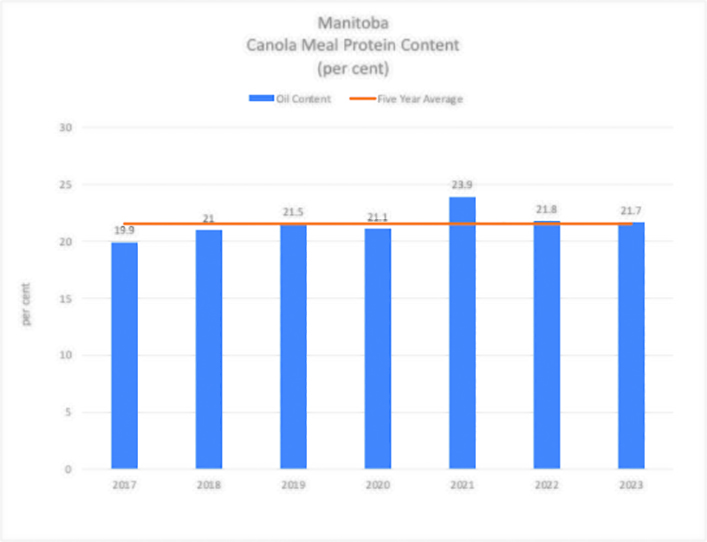
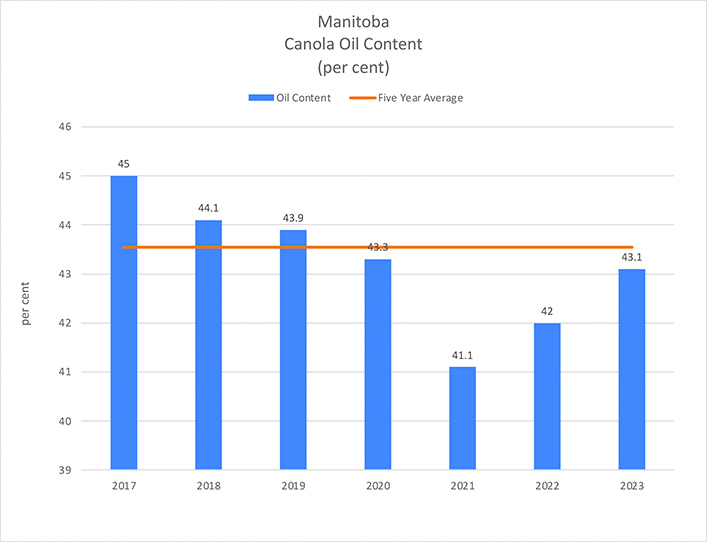
The dry weather this growing season has left soil moisture conditions in similar shape to last year in most of the southern and central Prairies. The growing season deficit this year is combined with a forecast for drier than normal winter conditions. This raises concerns about the moisture that will be available for the 2024 crop.
Farmers in the southern and central Prairies should monitor soil moisture this fall when deciding on their canola cropping plans for 2024. Northern growing areas have variable soil moisture conditions, but they are generally better than the central and the south.





